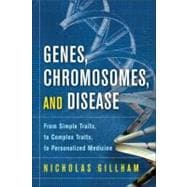
What is included with this book?
| Preface | p. ix |
| Hunting for disease genes | p. 1 |
| How genetic diseases arise | p. 25 |
| Ethnicity and genetic disease | p. 55 |
| Susceptibility genes and risk factors | p. 81 |
| Genes and cancer | p. 103 |
| Genes and behavior | p. 129 |
| Genes and IQ: an unfinished story | p. 151 |
| Preventing genetic disease | p. 175 |
| Treating genetic disease | p. 199 |
| The dawn of personalized medicine | p. 235 |
| Postscript: a cautionary note | p. 249 |
| References and notes | p. 253 |
| Glossary | p. 293 |
| Some useful human genetics Web sites | p. 307 |
| Acknowledgments | p. 309 |
| About the author | p. 311 |
| Index | p. 313 |
| Table of Contents provided by Ingram. All Rights Reserved. |
The New copy of this book will include any supplemental materials advertised. Please check the title of the book to determine if it should include any access cards, study guides, lab manuals, CDs, etc.
The Used, Rental and eBook copies of this book are not guaranteed to include any supplemental materials. Typically, only the book itself is included. This is true even if the title states it includes any access cards, study guides, lab manuals, CDs, etc.